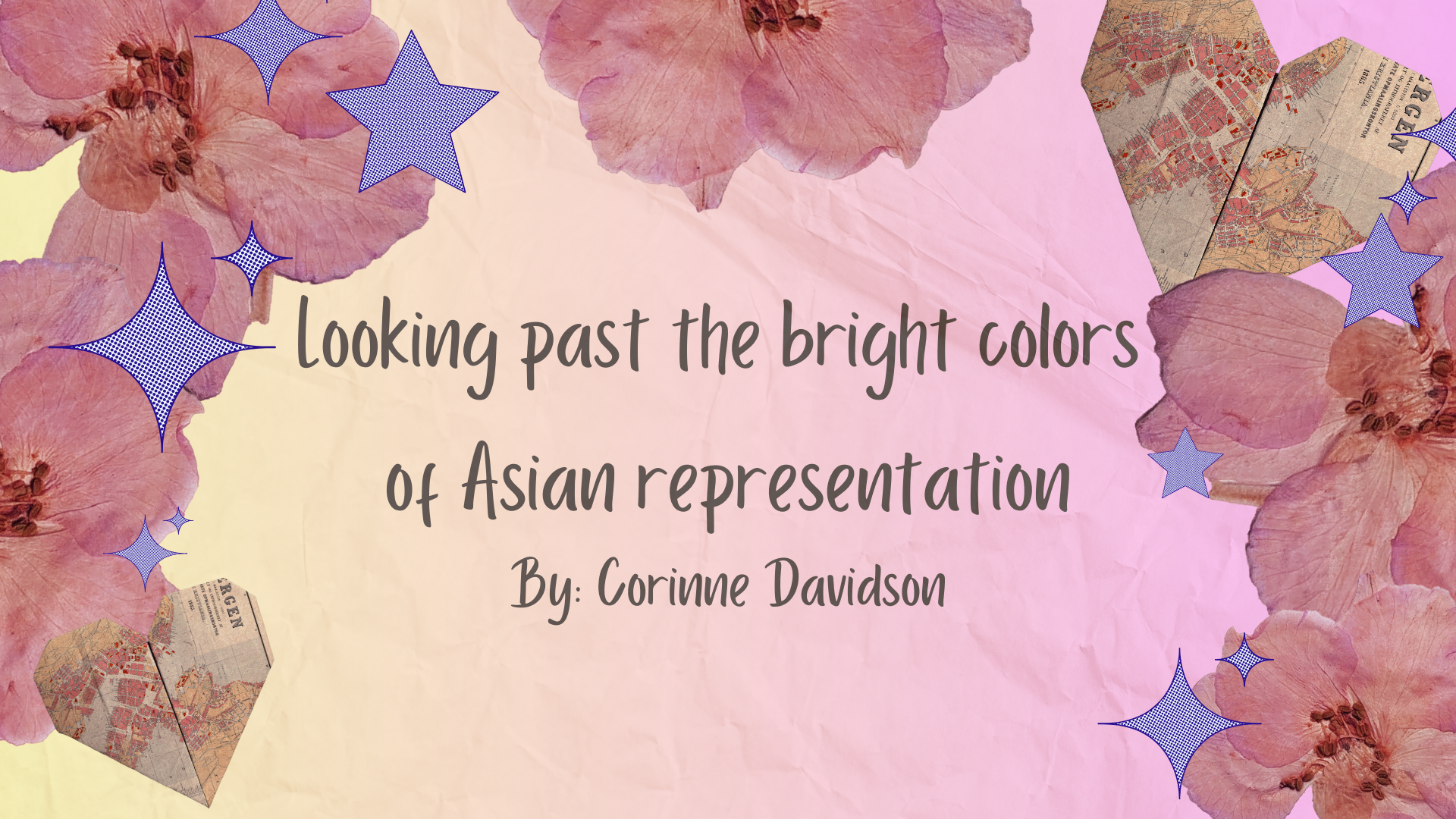Looking past the bright colors of Asian representation
A critique of Boston’s Museum of Fine Arts’ "Hallyu! The Korean Wave" exhibit.
Graphic by Corinne Davidson
As a queer Asian-American woman, I am no stranger to the transition from insecurity to acceptance of my identity. Throughout high school and early college, I struggled with the intersections within my identity for various reasons, but have ultimately found comfort in them.
The “Hallyu! Korean Wave” exhibition at the Boston Museum of Fine Arts (MFA) was open from March 24, 2024, to July 28, 2024. I visited it in June 2024. The exhibit aimed to be an “immersive and multisensory” experience that celebrates the “vibrant creative force” that is Hallyu. The term “Hallyu” describes the rise of South Korean culture through media such as film, TV and music. While the exhibit was fun and different from the traditional ancient and contemporary collections within the MFA, my friends and I left with mild discontentment.
It’s been months now since I visited the exhibit, but I still find myself frequently thinking about it.
The exhibit began by explaining how South Korea experienced a dramatic shift from financial failure to immense success because of Hallyu, or the “Korean wave.” Korea.net defines Hallyu as the “global craze for Korean culture.” This demand for Korean media and culture has pushed South Korea into the spotlight that it holds today.
But, before entering the exhibit, we were greeted by a plethora of screens playing different versions of the “Gangnam Style” music video. This switch from fun and high-energy pop music to gloomy history caught me off guard. My friends and I agreed that while “Gangnam Style” is an influential piece of Korean media, it felt like having it at the entrance boiled all the history down to one viral video.
The rest of the exhibit had sections on K-pop, Korean cinema, K-beauty and other popular topics. It was fun to see the various videos, clothing and media crazes, but my friends and I felt a vital piece was missing: the outward impact on the Asian community.
Don’t get me wrong, I think it is amazing to see more Asian representation in media, especially after there has been such a long history of misrepresentation. But, having good representation doesn’t just mean showing certain people on screen. Good representation means having diversity behind the scenes, including people of all backgrounds and listening when the represented community has a problem.
A monumental piece of Asian media was “Crazy Rich Asians.” Not only did the film have a fully Asian cast, but the director and two of the writers were also Asian. This film was also important because it portrayed Asians as complex characters who were to be desired. Since then, we have seen more powerful Asian films such as “Shang-Chi and the Legend of the Ten Rings,” “Always Be My Maybe” “Dìdi,” “Turning Red” and “Everything Everywhere All at Once.” These pieces of media opened doors for Asian actors and regular people alike while telling uniquely Asian stories: Asian family dynamics, generational trauma and the Asian American experience.
While the representation in film is amazing, some negatives come up in other media fields. One of the negative impacts that I’ve seen a lot of recently online is the fetishization of Asian people, especially women. It used to be commonly called “yellow fever,” but the current generations on the internet have taken a liking to the “Oxford study” title. People on TikTok often use “Oxford study” to refer to relationships between Asian women and white men. Whether the study is accurate or not, I think there could be some correlation between the increase in Asian media and the rise in desire for Asian people.
I’m not Korean, but I am part Japanese, and I often see how Japanese culture is fetishized and hyper-fixated on. I often compare how some people obsess over anime and manga to people’s obsessions with K-pop and K-dramas. The common denominator with both is how the people and their cultures get hyper-sexualized and obsessed over.
When I took Japanese in high school, I often felt underlying discomfort because I knew some people were taking the class because of their interest in anime. I remember people dressing up as “Naruto” characters on a random day and making a big deal out of calling our TA senpai — which was respectful but felt like an underlying joke. This made me uncomfortable for two reasons: one, because I knew how anime and manga could get hyper-sexualized, and two, because it felt like people were more invested in the culture than I was.
I would often question why some of my non-Japanese classmates cared more about the culture than me — the one who is Japanese. The whole ordeal made me insecure in my Japanese identity and made me subconsciously push that heritage away.
As I said before, the MFA exhibit aimed to highlight the rise of Korean pop culture. While the rise to fame is interesting to learn about, it is important to also acknowledge the less-than-ideal impacts of that fame.
As an Asian American woman, I think the MFA exhibit would have benefited from some kind of discussion about the negative impacts. No one likes to look at the negative side of culture — we like to focus on the good. But if you live in a world of only good, everything starts to lose meaning. It’s important to look at the negative side because it puts things into perspective and provides a deeper appreciation for the subject.
Society likes to idealize Korean culture because of the Hallyu wave, but it is important to understand that there are real people behind the spotlights. I think that the MFA exhibit could have had a deeper impact on audiences if the fetishization and other negative aspects had been talked about. Asian communities can speak up on their own accord, but a bigger platform, like a museum exhibition, could help immensely.
